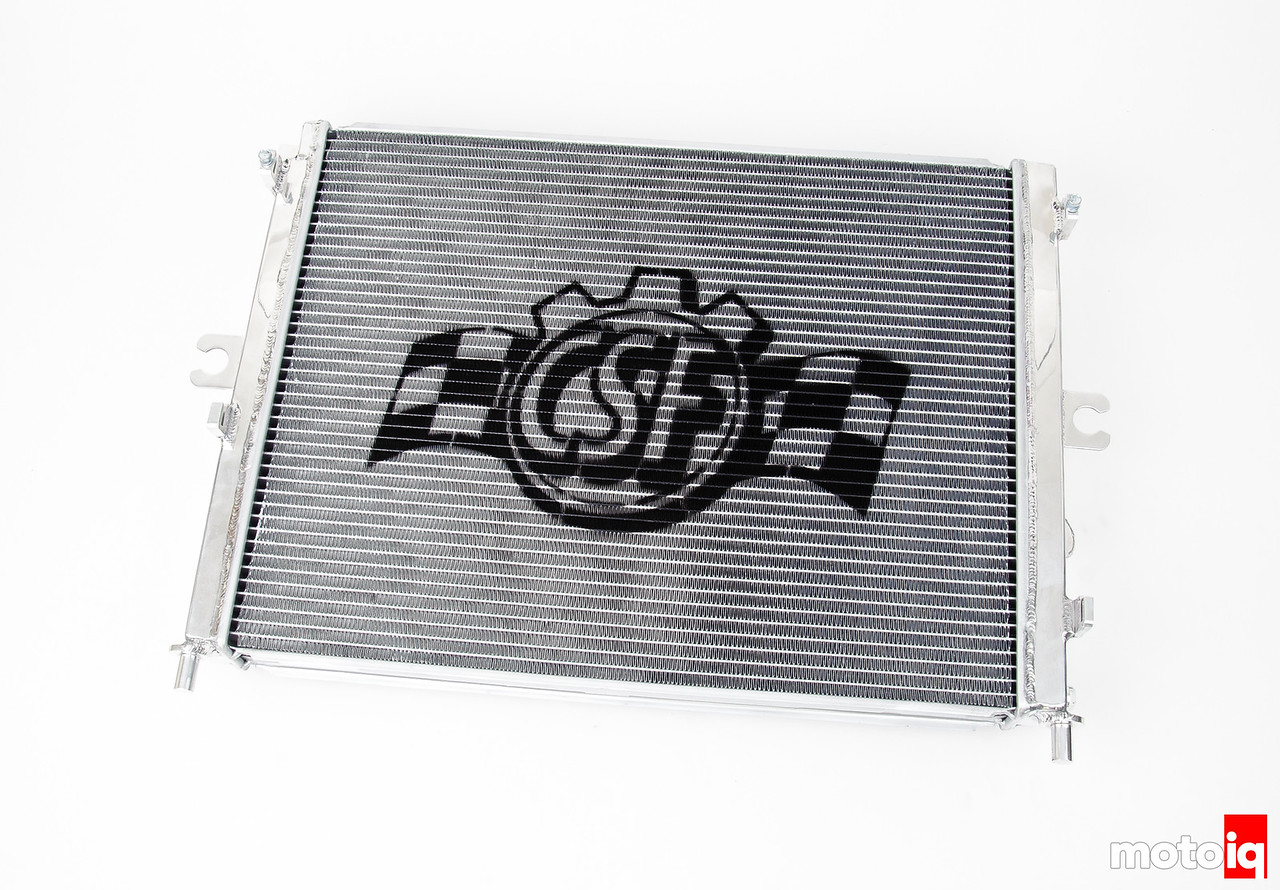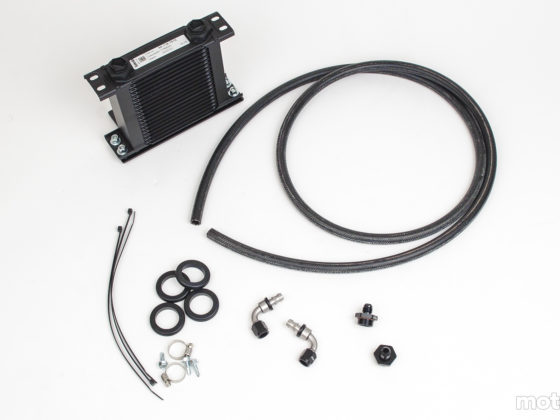
The condenser is unbolted then it is unclipped from the radiator and the radiator is slid free. The condenser stays in the car.

Frontal area wise the CSF radiator is the same as the stock radiator.

As far as thickness you can see that the CSF core is 33% thicker.

In fact, the stock core is about 1.5″ thick.

The CSF core is 2″ thick and with CSF’s construction methods described above, it is inch per inc a much more efficient heat exchanger as well.

The OEM rubber mounting pads are slipped onto the pegs on the bottom of the CSF radiator.




11 comments
It’s interesting that the radiator guide only needs to cover 1/3 of the radiator.
I can guess at a few of the factors that go into the consideration of this choice, but coming up with the idea of partial coverage is the stroke of genius. Deciding on how much to cover must be an interesting exercise too.
My opinion is that GM wanted to have some airflow through the engine compartment to keep the cats from cooking off stuff in there, so some air is vented out the hood, the rest flows through the engine compartment, keeps the cats cool and then exits out the fender vents.
And it also prevents any problems with driving or parking your car in heavy rain because the water does not touch any engine components.
Is the CSF a single pass radiator like the stock unit or double pass?
Single-pass.
random note, the oem auto Z06 rad is also 2″ thick… idk if it cools as well as the CSF tho
what temps were you guys hitting with the aux rad installed before switching to the CSF? You say C7’s hit 220-230 at the track, but nothing about specifically this car before and after…
also, limp mode is 260. at 230 they start pulling timing and reducing power.
We were hitting the same peak temp but on a cooler day like high 80’s low 90’s.
You provided pictures and instructions for installing the CSF Radiator. But you failed to provide information on how to order it and l have no idea on how much it may cost to obtain it.
You can follow the link to CSF Radiators at the end of the article.
How about the link to CSF’s web site?